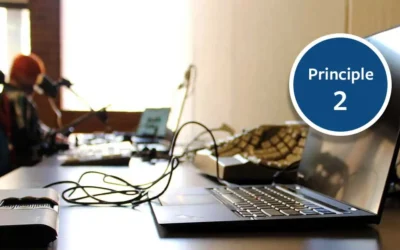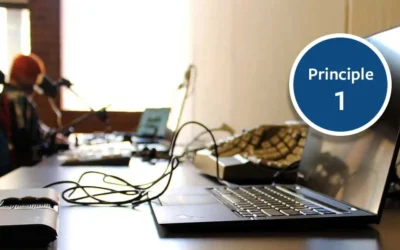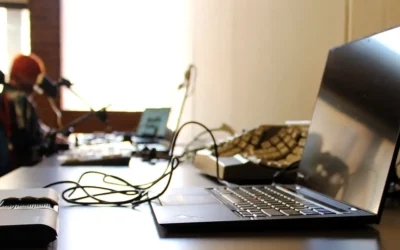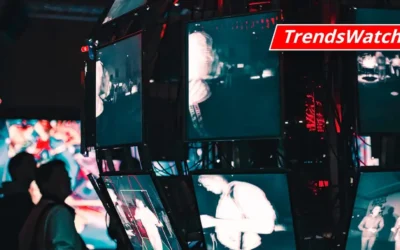How to Form a Museum CMS Procurement Team

Rachael Cristine Woody
If you’re shopping for a new museum collections management system (CMS) the procurement process is in your near future. Now is the time to think about what the procurement process entails, what information you need, and who should be involved.
Procurement is the act of obtaining something. In this case, procurement includes the activities undertaken by museum staff in order to research, test, and select the right CMS for the museum. The first step in acquiring a new CMS is to form a procurement team. Subsequent procurement actions will be covered in future blog posts.
Forming the Procurement Team: Who Are the Museum CMS Stakeholders?
It’s important to know who the museum CMS stakeholders are when forming a procurement team. Stakeholders can be both external and internal to the museum, so be sure to think about both when identifying them. Below is a brief description of who external and internal museum stakeholders are. For more information on museum stakeholders please see Who are the Museum Stakeholders in Museum Digital Projects?.
External Museum CMS Stakeholders
External museum CMS stakeholders include patrons, researchers, and communities who are connected to the collection or coexist locally to the museum site. If an external stakeholder can’t be included on the procurement team, a staff person who can speak knowledgeably regarding external stakeholder needs must be included.
Internal Museum CMS Stakeholders
There are five types of museum staff who tend to use the CMS the most: collections managers (or registrars), curators, conservators, educators, and exhibit designers. Each require different CMS experiences and each play a role on the input and extraction of information from the system. If the museum is considering software that will rely on technical expertise, or has IT-regulations it must follow, an IT representative should be included as an internal stakeholder on the procurement team.
Form an Effective Procurement Team
Once a review of stakeholders has been conducted, it’s time to choose a team of people who represent the majority of CMS stakeholders and their needs. A procurement team should reflect all stakeholders, but still be small enough for effective coordination, discussion, and decision-making. You can base the size of the team on a percentage of museum staff or by assigning a designated number. Effective teams are larger than three, but no more than 12 people. Finally, given the importance of procuring the right CMS for the museum and implementing it successfully, be mindful to select team members who will commit fully to the process. If team members don’t engage fully or don’t take the project seriously mistakes will be made that could derail the procurement process.
Hold the Procurement Team Kick-Off Meeting
Once the team is assembled, host a kick-off meeting in order to provide an orientation to the work and furnish any known project details such as timeline or budget.
Ask team members to:
- Introduce themselves;
- State their role in the museum and on the procurement team;
- Explain how they use the current museum CMS (if applicable); and
- Acknowledge if they’ve ever been a part of a CMS procurement process before.
This will help members make connections between the stakeholder areas represented and how they factor into choosing the right museum CMS. Use this time to solicit team member questions, concerns, comments, and needs. The more needs and use cases accounted for, the easier it will be to select a CMS that helps all museum staff do their jobs effectively. Once all the information has been compiled, the procurement team can use these initial parameters to begin their search for the right museum CMS.
What’s Next?
Once the museum procurement team is formed, staff can begin to identify requirements for the new CMS. These requirements will form a specifications rubric that will be used to help identify and evaluate collections management systems for consideration. Stay tuned for next week’s post on how to formulate new CMS specifications.

Rachael Cristine Woody
Consultant, author, and blogger Rachael Cristine Woody advises on museum strategies, collections management and grant writing for a wide variety of clients. Learn about Lucidea’s Argus solution for museum collections management and digitization and read more of Rachael’s blog posts here.
Similar Posts
Museum Collections Online with Accessibility Principle 2: Operable
Compliance with WCAG Version 2.1 Principle 2: Operable
Museum Collections Online with Accessibility Principle 1: Perceivable
Compliance with WCAG Version 2.1 Principle 1: Perceivable, affecting information published from museum CMS to an online portal; expert guidance
Accessibility Standards for Museum Collections Online
A museum’s compliance with the ADA Title II 2024 update has benefits for its online content and for the museum’s community of users.
Museum TrendsWatch 2024: Digital Twins and Doom Loops & Combatting the Loneliness Crisis
Digital Twins is the construction of a digital surrogate for a person, place, or thing—one of several new concepts and trends in the museum sector.




Leave a Comment
Comments are reviewed and must adhere to our comments policy.
0 Comments